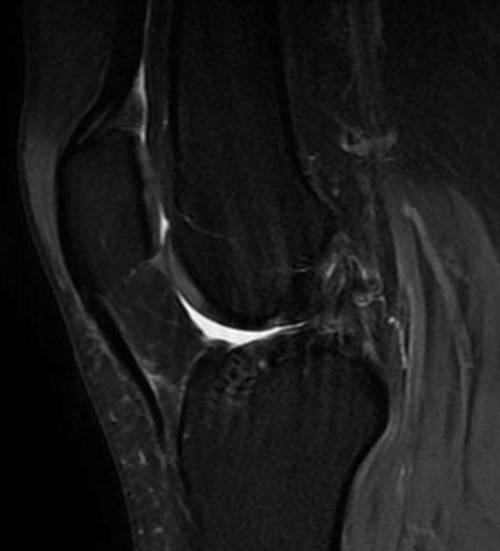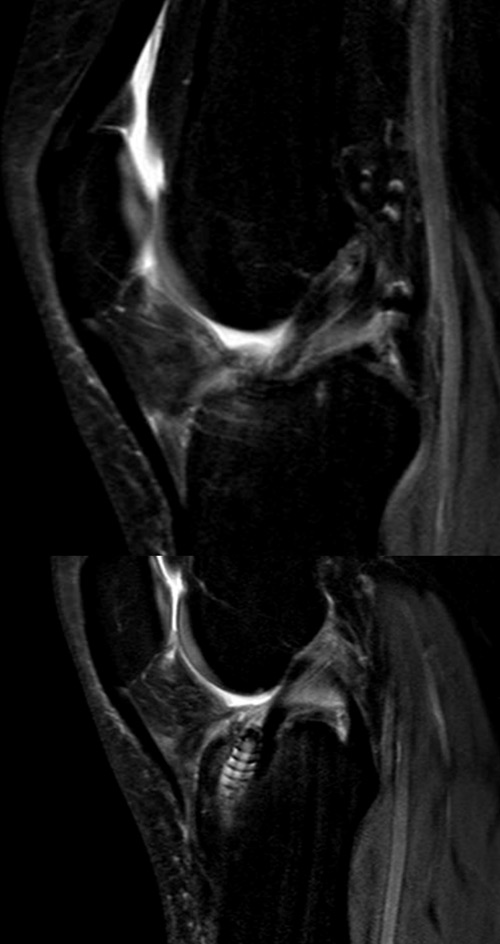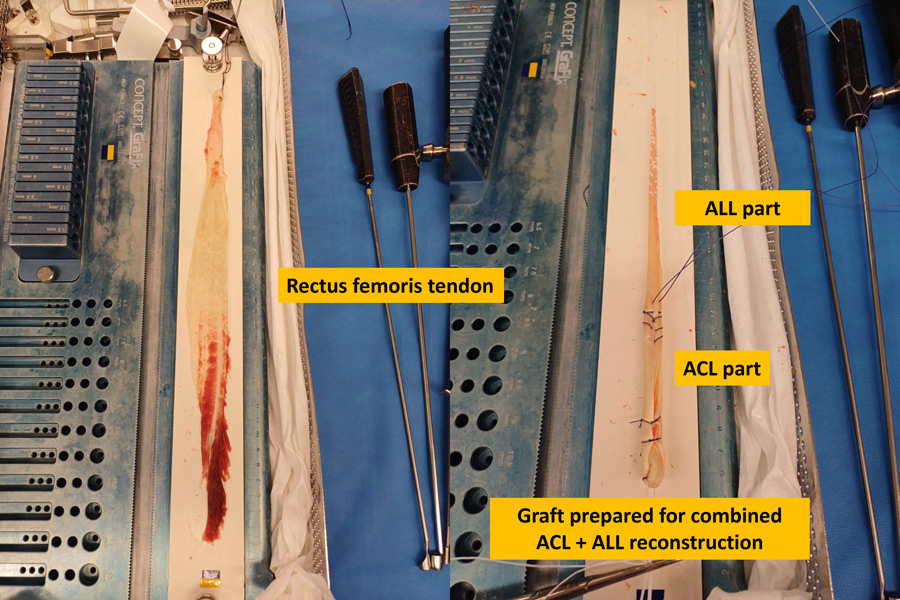Through the case of a 26-year-old man presenting with knee joint pain and effusion, and a history of ACL reconstruction using hamstring graft, the aim is to discuss the different therapeutic options in cases of ACL graft failure and to propose an innovative technique for treatment.
- 26 years old male
- Knee sprain while playing volleyball
- Joint pain and effusion
- Lachman 3+ / Pivot 2+
- History of ACL reconstruction with harmstring 7 Years ago. Had undergo a routine MRI showing an intact ACL graft 5 Years ago
Imaging


How would you manage this condition?
- ✔️1 time surgical revision
As patient is Young and maintained an intense activity rhythm, revision is indicated
Which type of graft would you use?
- ✔️Rectus femoris
Disadvantages of using the conventional quadriceps tendo:
- Possibility of a short graft
- Fluid leakage from violation of the vastus intermedius
- Arthrogenic inhibition of the quadriceps
- Quadriceps injury – technical error
- Increased costs related to fixation materials
The rectus femoris tendon


Tips and Tricks
1 – Separate the rectus femoris from the vastus about 2cm proximal to the patella (in the patella, the tendon merges more with the vastus and separation is more difficult)
2 – Sink the scalpel blade only about 3mm (more than that will cause capsule violation)
3 – Dissect the tendon proximally for about 7/8cm (less than that will not separate the tendon adequately from the vastus)
4 – Test whether the tendon is moving well, without adhesions
5 – Use a rigid and wide stripper (preferably 8mm)
What should have been done to decrease the risk of graft failure?
- ✔️Lateral tenodesis
- ✔️Anterolateral ligament reconstruction
At the time, associated anterolateral reconstructions (anterolateral ligament/Lemaire) were not routinely performed by me in primary cases.
Today this case would probably undergo extra-articular reconstruction.


